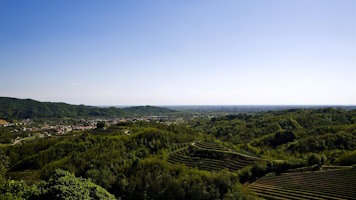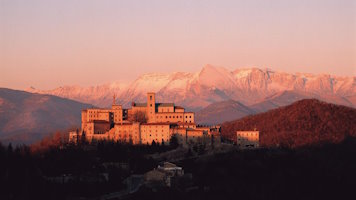The current square, previously known as the market square, “women's square”, “fountain square”, or “forum”, occupies the block southeast of the main Roman cardo, within the perimeter of the second Roman city walls (2nd century A.D.). Archaeological excavations carried out in the 19th and 20th centuries have revealed traces of a Forum, the remains of some domus, an important thermal complex, and other Lombard artifacts.
At the center of the square stands the fountain, which has carried water here from 1277 and is still in operation. Originally, the fountain had a hanging structure with a square plan, a "chapel" where mass was celebrated on market days. The canopy was demolished in 1803, and the fountain was rebuilt in 1824. Today, it consists of a basin in pietra Piasentina with a decorated parapet and is topped by a statue of Athena from Villa Manin in Passariano.
To the west of the fountain in 1874, a Lombard stone sarcophagus was accidentally discovered, considered the “
tomb of Duke Gisulfo”, the first Lombard duke to live in the city, full of valuable artifacts. In 1898, 110 years after the death of the Lombard historian Paulus Diaconus, the square was named after him.
Here also stand the
House of Paulus Diaconus (13th and 14th centuries), which housed the first seat of the community house, and the former Monte di Pietà (1494), the final site of an early pawn shop (operated by the local Jewish community since 1273).














